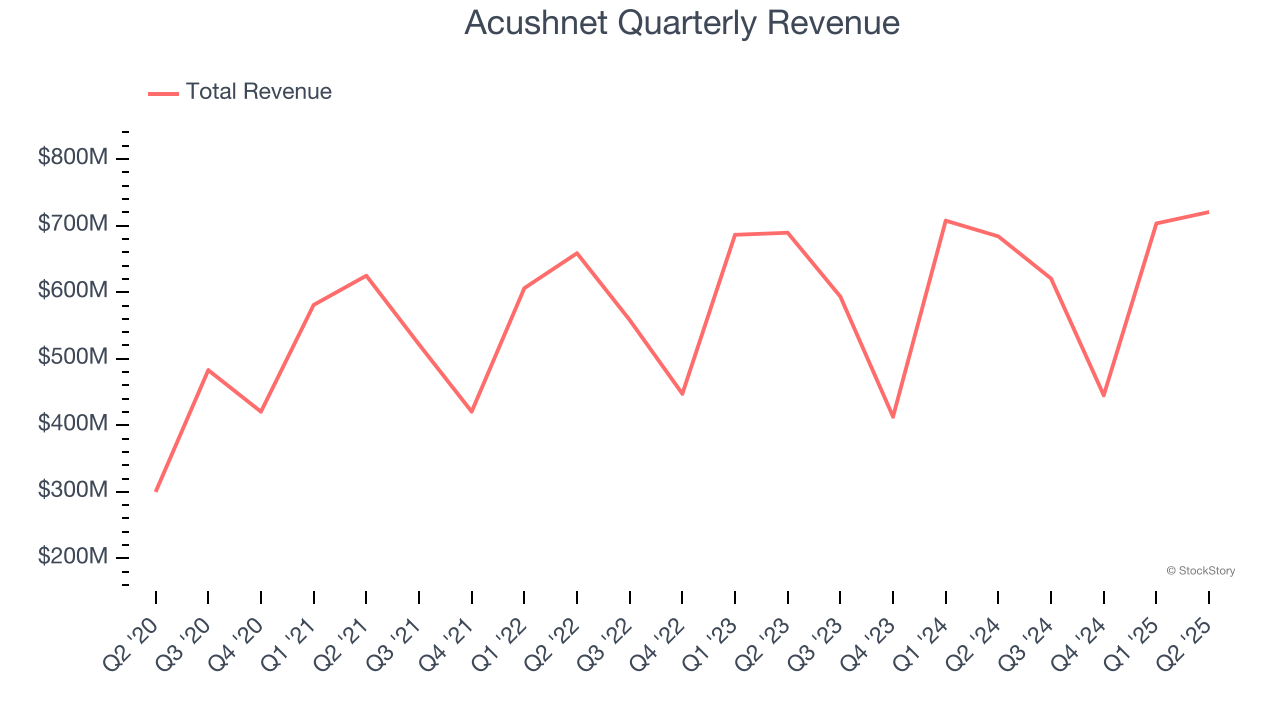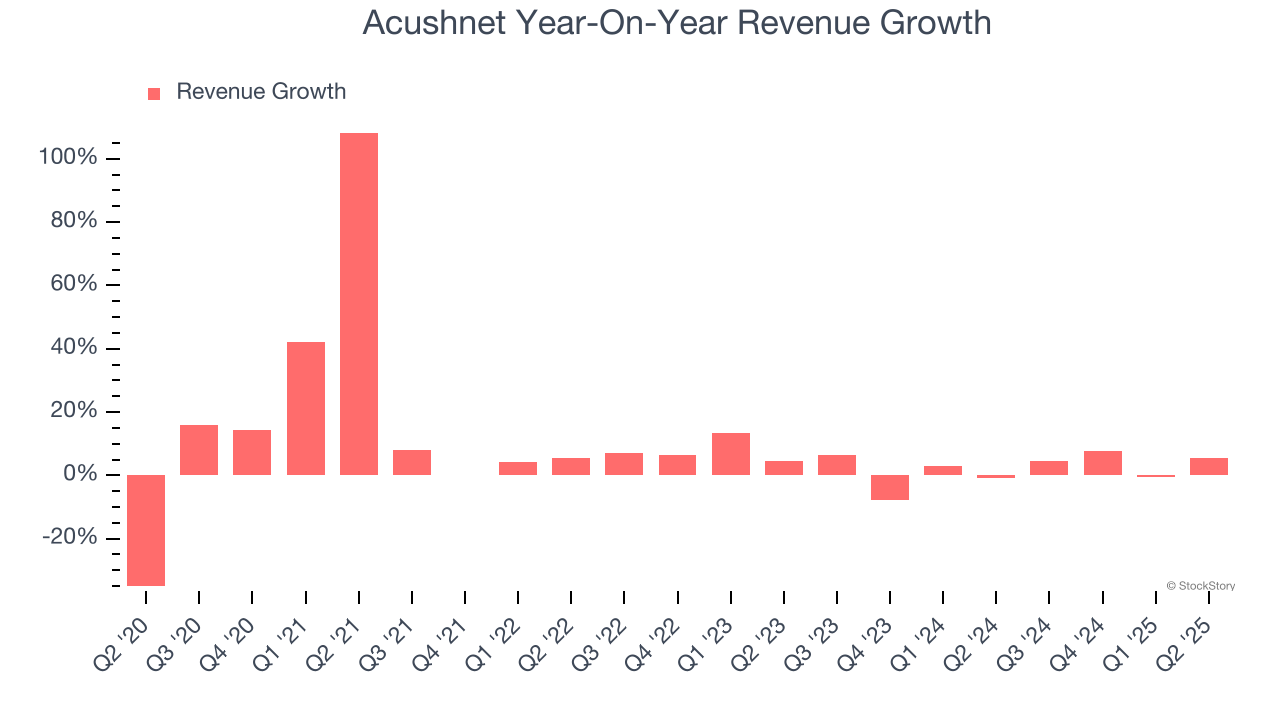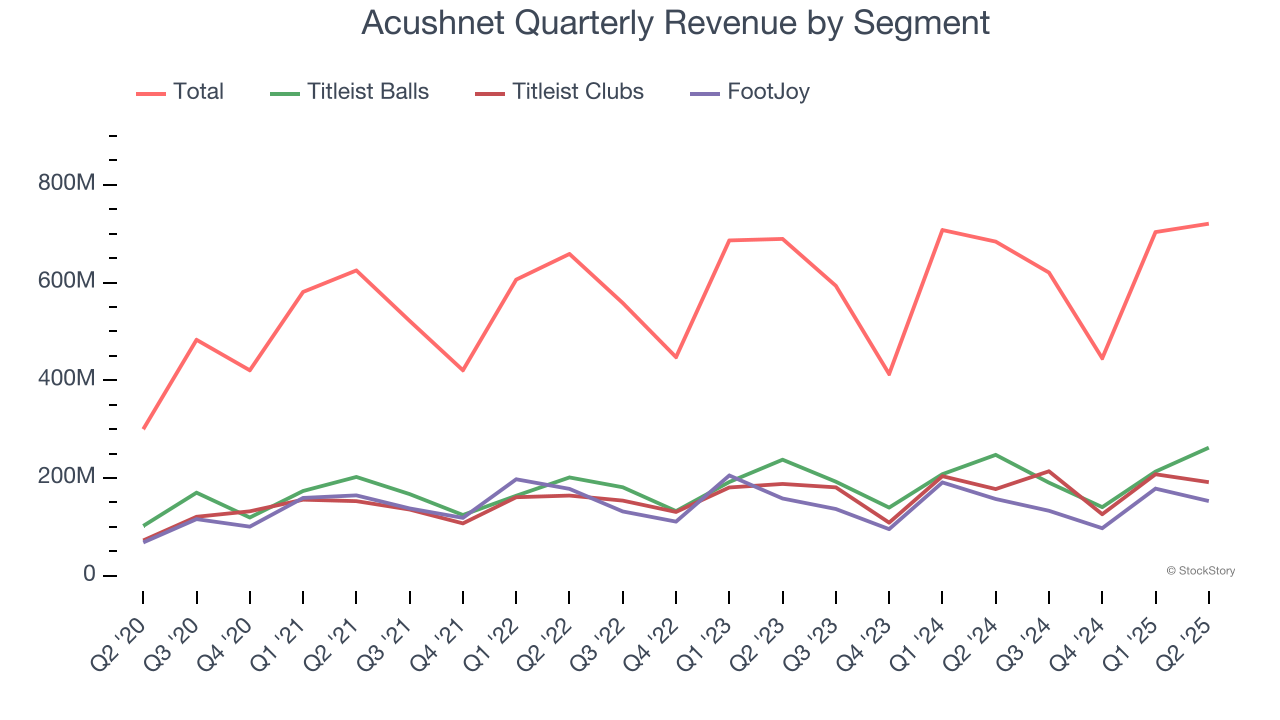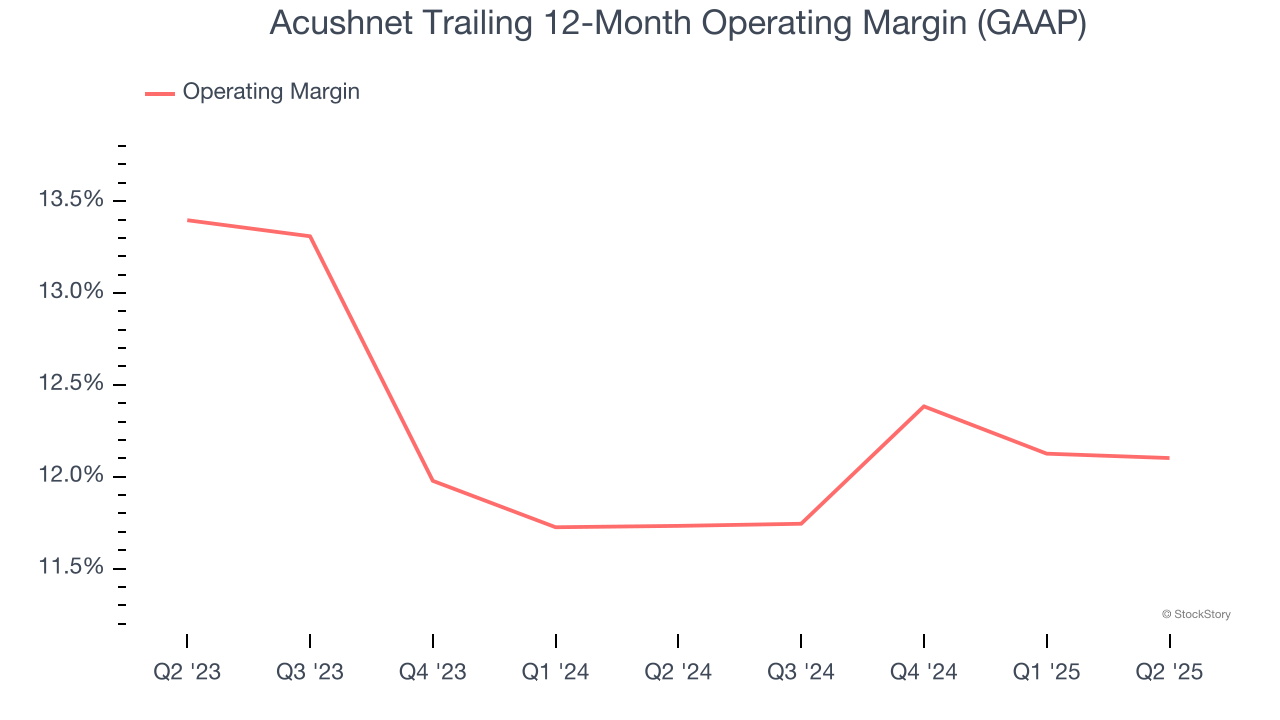
Golf equipment and apparel company Acushnet (NYSE:GOLF) reported Q2 CY2025 results exceeding the market’s revenue expectations, with sales up 5.4% year on year to $720.5 million. Its GAAP profit of $1.25 per share was 4.7% below analysts’ consensus estimates.
Is now the time to buy Acushnet? Find out by accessing our full research report, it’s free.
Acushnet (GOLF) Q2 CY2025 Highlights:
- Revenue: $720.5 million vs analyst estimates of $716.3 million (5.4% year-on-year growth, 0.6% beat)
- EPS (GAAP): $1.25 vs analyst expectations of $1.31 (4.7% miss)
- Adjusted EBITDA: $143.1 million vs analyst estimates of $137.2 million (19.9% margin, 4.4% beat)
- Operating Margin: 15.2%, in line with the same quarter last year
- Free Cash Flow Margin: 19.2%, down from 28.8% in the same quarter last year
- Market Capitalization: $4.68 billion
Company Overview
Producer of the acclaimed Titleist Pro V1 golf ball, Acushnet (NYSE:GOLF) is a design and manufacturing company specializing in performance-driven golf products.
Revenue Growth
A company’s long-term sales performance can indicate its overall quality. Any business can experience short-term success, but top-performing ones enjoy sustained growth for years. Over the last five years, Acushnet grew its sales at a 10.7% compounded annual growth rate. Although this growth is acceptable on an absolute basis, it fell short of our standards for the consumer discretionary sector, which enjoys a number of secular tailwinds.

We at StockStory place the most emphasis on long-term growth, but within consumer discretionary, a stretched historical view may miss a company riding a successful new product or trend. Acushnet’s recent performance shows its demand has slowed as its annualized revenue growth of 2.2% over the last two years was below its five-year trend. 
We can better understand the company’s revenue dynamics by analyzing its three most important segments: Titleist Balls, Titleist Clubs, and FootJoy, which are 36.4%, 26.6%, and 21.2% of revenue. Over the last two years, Acushnet’s Titleist Balls (golf balls) and Titleist Clubs (golf clubs) revenues averaged year-on-year growth of 4% and 6.5% while its FootJoy revenue (apparel) averaged 3.5% declines. 
This quarter, Acushnet reported year-on-year revenue growth of 5.4%, and its $720.5 million of revenue exceeded Wall Street’s estimates by 0.6%.
Looking ahead, sell-side analysts expect revenue to decline by 2.2% over the next 12 months, a deceleration versus the last two years. This projection doesn't excite us and suggests its products and services will see some demand headwinds.
Software is eating the world and there is virtually no industry left that has been untouched by it. That drives increasing demand for tools helping software developers do their jobs, whether it be monitoring critical cloud infrastructure, integrating audio and video functionality, or ensuring smooth content streaming. Click here to access a free report on our 3 favorite stocks to play this generational megatrend.
Operating Margin
Operating margin is a key measure of profitability. Think of it as net income - the bottom line - excluding the impact of taxes and interest on debt, which are less connected to business fundamentals.
Acushnet’s operating margin might fluctuated slightly over the last 12 months but has remained more or less the same, averaging 11.9% over the last two years. This profitability was higher than the broader consumer discretionary sector, showing it did a decent job managing its expenses.

This quarter, Acushnet generated an operating margin profit margin of 15.2%, in line with the same quarter last year. This indicates the company’s overall cost structure has been relatively stable.
Earnings Per Share
We track the long-term change in earnings per share (EPS) for the same reason as long-term revenue growth. Compared to revenue, however, EPS highlights whether a company’s growth is profitable.
Acushnet’s EPS grew at an astounding 36.8% compounded annual growth rate over the last five years, higher than its 10.7% annualized revenue growth. This tells us the company became more profitable on a per-share basis as it expanded.

In Q2, Acushnet reported EPS at $1.25, up from $1.11 in the same quarter last year. Despite growing year on year, this print missed analysts’ estimates, but we care more about long-term EPS growth than short-term movements. Over the next 12 months, Wall Street expects Acushnet’s full-year EPS of $3.74 to shrink by 11.4%.
Key Takeaways from Acushnet’s Q2 Results
It was encouraging to see Acushnet beat analysts’ EBITDA expectations this quarter. On the other hand, its Titleist Clubs revenue missed and its EPS fell short of Wall Street’s estimates. Overall, this quarter could have been better. The stock traded down 4.9% to $75.79 immediately following the results.
Is Acushnet an attractive investment opportunity right now? If you’re making that decision, you should consider the bigger picture of valuation, business qualities, as well as the latest earnings. We cover that in our actionable full research report which you can read here, it’s free.
